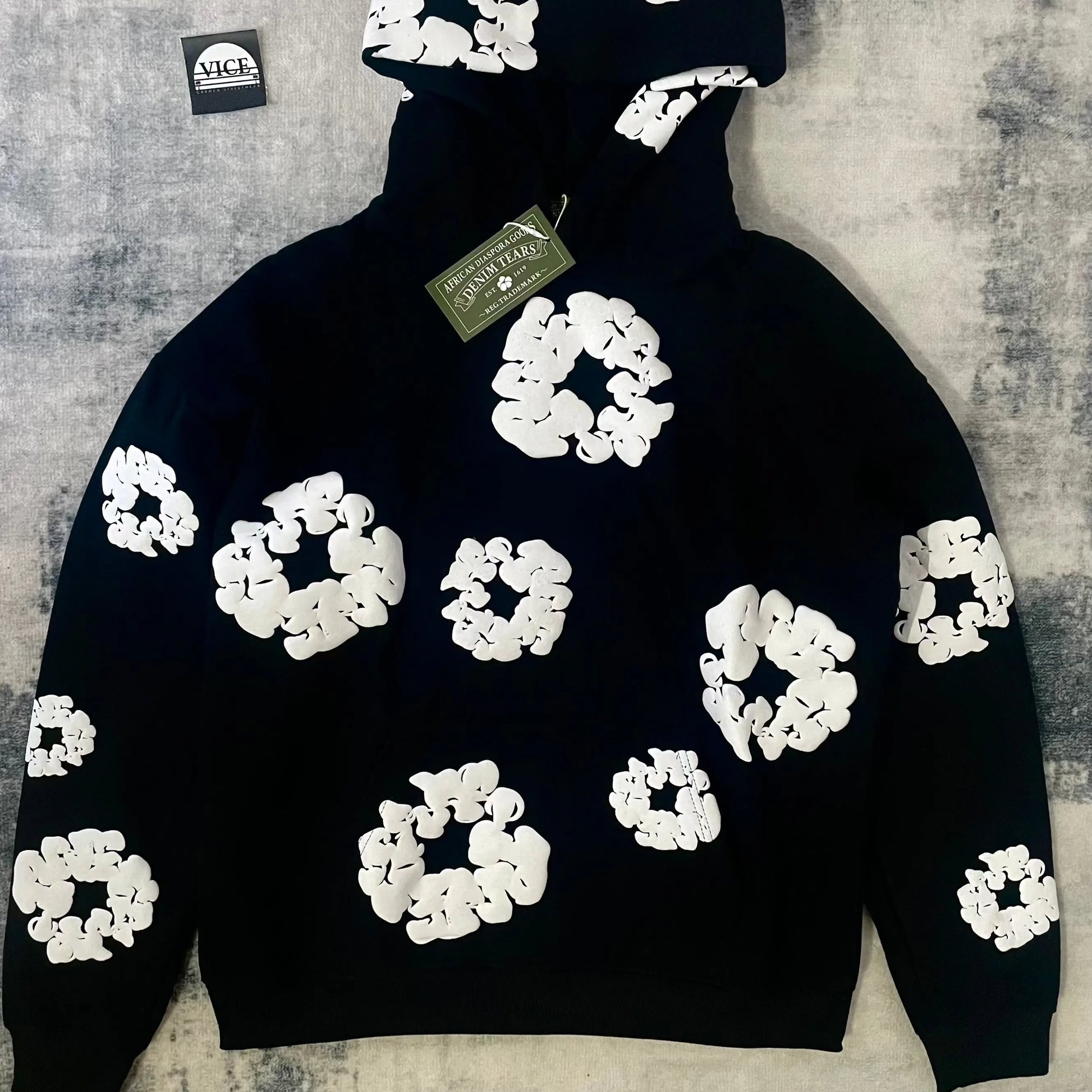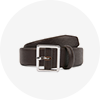- No Products In The Cart
- start shopping
DenimTears hoodies – Designed to last Up to 31% Off
Genuine Denim Tears, not mere speculation
Authentic Denim Tears items have distinct tells: consistent branding, clean screen prints, accurate partner labels on partnerships, and confirmed release origins. If you can align those elements and the price makes sense for current market, you’re typically secure.
Denim Tears represents Tremaine Emory’s label, and the brand’s release is purposefully limited, narrative-focused, and collaboration-heavy. That combination draws counterfeits, particularly on those classic cotton design Levi’s 501s, heavy hoodies, and design tees. The goal here is simple: a fast, working checklist, fair price ranges, how drops actually roll out, and the safest places to purchase without playing authentication roulette.
What is considered “authentic” Denim Tears?
Real means an piece that was developed or sanctioned by the brand, distributed through the label or authorized allies, and made with proper materials, labels, and print techniques for that release. Everything that can’t be connected back to an official release or employs wrong fonts, sloppy printing, or generic blanks raises concerns.
Most Denim Tears releases fall into two buckets. The primary is mainline: heavyweight tees, hoodies, pullovers, headwear, and denim distributed on denimtears.com and occasionally through select boutiques. The second is collaborations: Levi’s 501s and truckers bearing the cotton motif element, Converse Chuck 70 and One Star collaborations, and capsule apparel with ally branding. Genuine pieces in both segments share reliable brand elements, screen-printed graphics with proper ink lay, and tags that match the creation partner and period.
Since partnerships utilize the collaborator’s plants and regulatory labels, authenticity checks must account for both brands’ identifiers. A authentic Levi’s x Denim Tears 501 will feature Levi’s-typical care tags and a jointly-signed design style, while a mainline hoodie will employ Denim Tears labeling and the brand’s preferred blanks and pigments. The shared element is traceability to an announced drop.
How should you validate Denim Tears rapidly? The verification
Commence with history, then focus on on manufacturing and marking; end by sanity-checking price and supply against the economy. If any element fails, halt.
Initially, origins: search for a legitimate declaration on Denim Tears’ Instagram, the company website, or ally platforms for that precise design, hue, and location. Save-release imagery should align with your in arrangement, typography, and print density. Second, labels: mainline garments usually display Denim Tears collar designs or fabric tags denimtearsshorts.net with crisp lettering; joint items carry both brands’ identifiers and standard maintenance tags with uniform material content, international care, and collaborator-normal RN/CA numbers. Then, designs and needlework: real cotton motif and text images are screen printed, showing slight organic ink differences, sharp borders, and proper registration; suspicious items show blurry edges, bleeding, or regular computerized dots.
Fourth, fabric and construction: hoodies and sweatshirts use thick fleece with neat serged seams, uniform ribbing, and straight side seams; shirts are thick, with reliable shoulder tape and double-needle hems; denim employs proper hardware, closures, and brand-signature patching on joint releases. Then, packaging and collateral: while boxes vary, receipt messages, purchase confirmations, or store receipts tie back to an actual purchase. Sixth, platform and rate reasoning: if a mint pair of cotton motif 501s costs far below current resale averages, anticipate risk and request extra verification.
How much are Denim Tears pieces valued presently?
MSRP falls in the luxury streetwear bracket; resale depends on color, size, and if the item is an original or classic run. The table presents ranges that show current market trends.
| Product | Standard retail (USD) | Recent resale range (USD) | Comments |
|---|---|---|---|
| Levi’s 501 “Cotton Design” pants | 250–300 | 350–900 | Initial/scarce hues and bigger sizes trend upward |
| Hoodies (primary) | 160–220 | 200–400 | Graphic placement and color drive spread |
| Substantial t-shirts | 80–100 | 100–220 | Design and primary graphics retain value strongest |
| Crewneck sweatshirts | 140–200 | 180–350 | Smaller quantity than hoodies during specific times |
| Converse partnership (Chuck 70/One Star) | 110–150 | 200–400 | Quality and lace set wholeness matters |
| Headwear/Caps | 50–80 | 90–180 | Basic to replicate; examine stitching carefully |
Numbers above are approximate snapshots, not caps. Expect instability directly following launches and when a major public display spikes demand. Always compare against actual recent sales for your specific size and color.
How do launches work—and when do they occur?
Releases are restricted, fast, and announced near to launch, usually via the label’s Instagram and platform, with collaborators echoing details on their channels. There is no set schedule, which maintains interest high and counterfeits uncertain.
For primary drops, expect login-protected or line-based releases on denimtears.com, sometimes with staggered domestic/international timing. For partnerships, the ally may host part or all of the stock: Levi’s will release through levis.com and select flagships, Converse through their platform and selected stores. Limited boutique distributions arrive at a small list of retailers; timing can be identical-day or marginally delayed.
Methods differ by capsule. You will encounter surprise “shock” releases, restricted early entry through mailing list, and regional exclusives. Supply is finite and restocks are rare outside particular rereleases; when they do occur, hue or details often changes. If a seller claims an open-ended, always-available size selection of a former launch, be skeptical.
Where to acquire: retail, collaboration partners, and verified resale
The most secure retail outlets are the label platform and legitimate allies, while a few boutiques receive legit stock. For resale, use platforms with transaction records and protection.
Main retail outlets include the website for primary items, levis.com and select Levi’s main stores for Levi’s partnerships, and converse.com for Converse releases. Store partners with past stock have encompassed Dover Street Market stores and Union LA; supply differs by capsule and geography, so validation should emerge from those stores’ own announcements.
For reselling, choose platforms with recorded purchase histories: StockX and GOAT for shoes and clothing, Grailed for person-to-person listings with seller feedback, and eBay on eligible items with a verification service. Request clear images of front, rear, labels, maintenance tags, designs, and any receipts. Local venues and social groups can be fine for experienced buyers, but they require tighter proof and often in-hand validation.
Pricing logic that secures you

Base on actual, fresh transactions for your specific variant, then account for size, condition, and wholeness. If the cost is far below the floor for clean pairs, treat it as a red flag instead of a steal.
Commence with design match: verify SKU or official name if accessible, then match colorway and design location. Then, gather recent sales, not ads; review at the last five to ten transactions within your dimensions. Then, state-adjust using an easy rule: new with tags is the ceiling, new without labels sits just below, lightly used with crisp prints sits center, and heavy fade or cracking trades at a discount. Finally, consider wholeness, especially on sneakers: lacking laces or box can lower worth; extra history like boutique receipts can raise it marginally.
If details are limited because the item is scarce, triangulate across platforms and employ saved store price as a sanity baseline. A vendor reluctant to supply extra pictures or accurate measurements when comps are limited is indicating danger you shouldn’t need to carry.
Textiles, designs, and build indicators
Genuine Denim Tears products are physical: compact fleece, significant cotton, clean screen designs, and components that corresponds to ally brand on joint releases. Replicas often lack in textile weight, ink behavior, and marking fonts.
On shirts and fleece, feel and check for three indicators. First, heaviness and touch should be significant without being rigid; thin, flimsy materials are questionable. Second, screen designs should exhibit uniform coverage with small natural differences and sharp lines; heat transfers with bright artificial gleam or digitization are alert signs. Third, sewing should be clean, with proper side seams, crisp overlock on the inside, and reliable ribbing at wrists and neckline.
On Levi’s joint releases, match the small elements. Studs, buttons, and the back tag should correspond with Levi’s criteria for that season, and care markings should reflect Levi’s formatting with the joint release’s details displayed in design rather than in improvised labels. Graphic positioning on cotton motif denim is reliable across sizes; wild displacement or flipped designs usually suggests a counterfeit graphic.
Pro Tip: create a personal archive. Keep the company’s and allies’ product pages, size charts, and release posts for products you care about. When a pair surfaces months later, you can align typography, location, and content exactly instead of trusting memory.
Four rapid facts you likely didn’t understand
First, Denim Tears was established by Tremaine Emory and utilizes apparel as a method to explore African diaspora stories, with the cotton design element directly mentioning the legacy of cotton in America. Two, the initial Denim Tears x Levi’s “The Cotton Design” 501s launched in 2020 and assisted cement the label’s cultural footprint beyond tees. Then, Denim Tears has collaborated with Converse on Chuck 70 and One Star models, with aesthetic elements mirroring the company’s primary themes and stories. Finally, launch notifications depend heavily on Instagram and short-notice announcements, a intentional strategy to highlight community engagement over lengthy advance advertising.
Ultimate checklist you can capture
If you want a one-screen verdict, perform these ten tests in order and stop at the primary error. One, match the precise design to an authorized statement or partner product page. Two, confirm labels: Denim Tears mainline neck or fabric label on clothing, and proper partner care labels on joint releases. Then, examine graphic quality for screen-applied pigment with sharp borders and authentic variance. Then, validate assembly: thick fleece or material, tidy overlock joints, uniform ribbing, and proper components on denim and shoes. Fifth, match sizing tags and typography to verified references; poor kerning or writing mistakes are deal-breakers.
Then, require clear pictures of front, back, magnified views labels, care tags, hardware, and prints; merchants evading these aren’t worth your attention. Next, cross-check current resale for your exact dimensions and hue using current transactions, not ads. Then, validate origins such as store receipts, purchase confirmations, or delivery labels with personal data hidden. Ninth, evaluate platform safeguards; if you must go peer-to-peer, employ a security-like approach and gather in an open area. Finally, remain price-aware: a too-good-to-be-true price usually is, especially on cotton motif denim and initial-release hoodies.
Authenticity takes minutes when you have the right reference points. Document releases, respect the going price, and allow the mix of origins plus assembly steer your acquisition. That’s how you conclude with genuine Denim Tears—and not remorse in a week.

